Trucks, these giants of the road, must not only transport extremely heavy loads but also do so safely, efficiently, and reliably over long distances. Among a truck's tyres, those on the drive axle play a particularly important role.
Drive axle tyres are responsible for transmitting the engine's power to the ground, allowing the truck to move forward and maintain its speed. They must support colossal loads and withstand intense driving and braking torques, all while providing exceptional grip and traction. The performance of these tyres affects the safety of the vehicle, its load, and its driver, as well as the overall efficiency of transport.
What is a drive axle?
A drive axle is the axle of a truck that is connected to the engine and transmits the power generated by it to the wheels to propel the vehicle. Drive axles are generally located at the rear of trucks and are responsible for transmitting driving and braking torques to the wheels. They provide the acceleration and driving force needed to set the truck in motion and maintain the desired speed.
Characteristics of drive axle tyres
Drive axle tyres are designed to support extremely high loads, often the heaviest of the entire vehicle. They must offer excellent traction and maximum grip to effectively transmit the engine's power to the ground. Their dimensions and load capacities are specific and superior to those of steering axle or trailer axle tyres.
The main difference with steering axle tyres lies in their design to withstand the stresses of transmitting driving/braking torques rather than manoeuvrability and steering angles. Compared to trailer axle tyres, they are reinforced to support heavier loads and offer better traction.
There are also drive axle tyres specifically designed for particular driving conditions, such as off-road tyres for construction sites or winter tyres for driving on snowy or icy roads. The choice depends on the needs and the environment in which the truck will be used.
Factors to consider
When choosing drive axle tyres, several crucial factors must be considered to ensure optimal performance, increased safety, and prolonged lifespan.
Firstly, the drive axle tyre must comply with the truck's maximum authorised load, as specified by the manufacturer. Drive axle tyres must be able to support this high load without compromising their integrity or grip. Choosing tyres with insufficient load capacity can lead to premature wear or even potentially dangerous failure.
The expected driving conditions also play a determining role. The tyres must be suited to the type of roads travelled (motorways, secondary roads, construction sites), the climate (hot, cold, frequent rain), and the terrain (flat, mountainous, rugged). For example, off-road tyres offer better traction and increased resistance to cuts for challenging construction sites.
Finally, the expected mileage and desired lifespan of the tyres influence the choice. Some models are designed for exceptional longevity, while others prioritise high performance over a shorter duration.
Load and speed ratings
Each heavy-duty tyre is characterised by specific load and speed ratings, indicated on the tyre sidewall. The load rating represents the maximum load the tyre can support at the recommended inflation pressure. The speed rating, on the other hand, indicates the maximum speed at which the tyre can safely travel with the maximum load.
For drive axle tyres, it is crucial to choose appropriate load and speed ratings. Indeed, these tyres generally support the heaviest loads of the vehicle and must be able to effectively transmit driving and braking torques. Ratings that are too low can compromise safety and lead to premature wear.
Due to the high loads they support, drive axle tyres require regular maintenance.
The Top dimension
Regular Maintenance
First and foremost, it is crucial to maintain the correct inflation pressure as recommended by the manufacturer. Insufficient pressure can lead to premature wear, excessive fuel consumption, and dangerous loss of grip. Conversely, overinflation can cause irregular wear and tread degradation.
Here are some tips for correctly checking the pressure of drive axle tyres:
Use a quality pressure gauge
Invest in a reliable and accurate tyre pressure gauge, preferably a dial or digital model rather than a stick gauge. A faulty gauge can give incorrect readings.
Check tyres when cold
Pressure should always be checked when the tyres are cold, that is, after at least 3 hours of vehicle inactivity or less than 1.6 km driven. The heat generated by driving temporarily increases the pressure.
Follow the manufacturer's recommendations
Refer to the owner's manual or the tyre sidewalls for the manufacturer's recommended pressure based on the load. Incorrect pressure can lead to premature wear or safety issues.
Check regularly
Inspect the pressure of drive axle tyres at least once a week and before any long journey. Tyres can slowly deflate over time.
Visual inspection
Visually examine the tyres for any signs of underinflation or damage before measuring the pressure. An abnormally deflated tyre requires immediate attention.
Adjust pressure if necessary
If the pressure is too low, inflate the tyre to the recommended value. If it is too high, let some air out until the correct level is reached.
Signs of Wear and Damage
Irregular wear, with smooth areas or cracks, generally indicates an alignment, pressure, or suspension issue. Deep cuts, bulges, or component separations are clear signs of damage that require immediate replacement.
Using damaged or excessively worn tyres can have serious consequences. It can lead to loss of grip, reduced braking performance, or even complete tyre failure, endangering the safety of the vehicle and its load.
When to Replace Tyres
When the tread depth reaches the minimum legal wear level, generally 4/32 of an inch (1.6 mm) or less, it is time to replace the tyre. Excessively worn tread seriously compromises grip and increases the risk of aquaplaning.
Excessive vibrations felt in the steering wheel or cabin can indicate a problem with the drive axle tyres, such as imbalance or internal damage, requiring their replacement.
Even in the absence of visible wear signs, tyres age and degrade over time. It is generally recommended to replace drive axle tyres every 5 to 7 years , depending on usage conditions.
It is also recommended to replace tyres in sets rather than individually. This ensures uniform performance and avoids wear differences that can compromise the truck's stability and handling.
A brief overview of frequently asked questions for this type of tyre.
What is the typical maximum load for a drive axle tyre?
Drive axle tyres are designed to support very high loads, generally the heaviest on the vehicle. The maximum load varies depending on the tyre model, but it is often between 6 and 9 tonnes per tyre.
How to determine the maximum load of a specific tyre?
The load index indicated on the tyre sidewall allows you to determine its maximum load capacity. Each index corresponds to a load in kilograms. For example, a load index of 150 equates to a maximum load of 3,350 kg per tyre.
Is retreading an option for drive axle tyres?
Yes, retreading is a viable option to extend the life of drive axle tyres, provided they are not too damaged. This allows the tyre carcass to be reused by replacing only the worn tread.
What are the benefits of retreading?
Retreading offers economic and environmental benefits. It generally costs 30 to 50% less than a new tyre and reduces waste by reusing the existing carcass. Additionally, the performance of a retreaded tyre is similar to that of a new tyre when done correctly.
Can different types of tyres be mixed on the same drive axle?
No, it is strongly discouraged to mix different types, brands, or models of tyres on the same drive axle. This can lead to differences in wear, traction, and road behaviour, compromising the vehicle's stability and safety.
Our Best Tyres
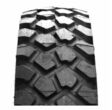
Learn more
Learn more
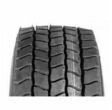
Learn more
Learn more
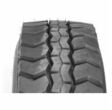
Learn more
Learn more
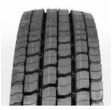
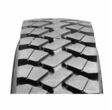
Super simple mounting for on/off service drive axle with a heavier payload per...
Learn more
Super simple mounting for on/off service drive axle with a heavier payload per...
Learn more
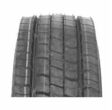
Learn more
Learn more
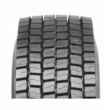
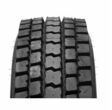
Equipped with a dual-component tread, it ensures high mileage capacity...
Learn more
Equipped with a dual-component tread, it ensures high mileage capacity...
Learn more
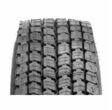
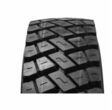
Learn more
Learn more
Conclusion
Drive axle tyres significantly impact the performance, safety, and efficiency of trucks. Their selection, maintenance, and replacement should be treated with the utmost care.
Choosing the right drive axle tyres depends on key factors such as the maximum allowable load, expected driving conditions, and desired mileage. Appropriate load and speed indices are essential to ensure sufficient capacity and resistance.
Regular maintenance, including pressure checks, wear inspections, and tyre rotation, maximises their lifespan and prevents premature failures. It is crucial to replace tyres as soon as signs of excessive wear or damage appear, following a safe procedure.
By wisely choosing your drive axle tyres and maintaining them properly, you will ensure optimal performance, reduced fuel consumption, and increased safety for your truck, load, and crew.






